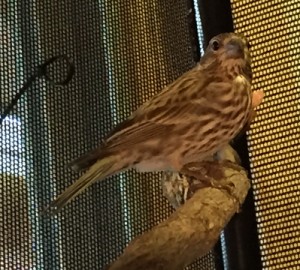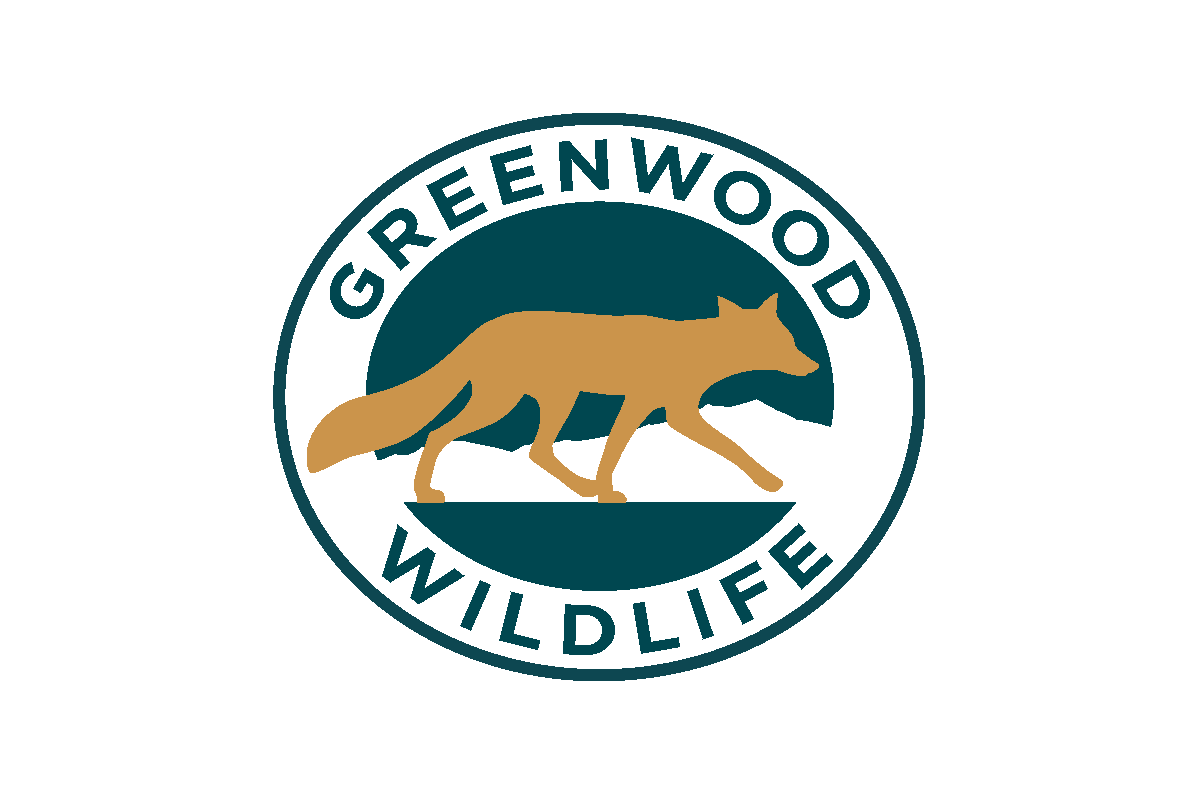
House Finch—The Ubiquitous Fruit Biter
Among the first native songbird species to make an appearance at Greenwood during baby bird season, House Finches are a very common sight in Colorado. They can be found in every county and they breed in all but 3 high mountain counties here. In 2014, Greenwood took in 85 members of this widespread species: 66 hatchlings, nestlings and fledglings and 19 adults. Originally, House Finches resided only in Mexico and southwestern U.S. But they were illegally sold as caged birds in the East in the early 1900s. With increasing enforcement of the Migratory Bird Treaty Act in the 1940s, which made it illegal to capture or sell most wild birds, some pet shop owners on Long Island, NY, allegedly just released their inventory of House Finches to avoid prosecution. The House Finches found that they rather enjoyed the Atlantic seaboard. And the rest, as they spread westward, back across the continent, is avian history.
Female and juvenile House Finches are rather drab brown with streaked breasts and bellies. But a male House Finch typically has a red forehead and a red stripe over his eyes, as well as red on the breast and the rump contrasting with rather drab, streaky brown elsewhere. (Both sexes and all ages can be distinguished from other similar-looking species—e.g., Cassin’s Finch, Pine Siskin—by their rather sturdy-looking beaks.) However, you might occasionally see a male that has yellow or orange feathers where most males would show red feathers. (This link shows a photo on such a finch.) Although such birds can trick you into thinking they’re another species, don’t be fooled! This color variation primarily reflects a diet that is low in carotenoid pigments—yellow, orange, or red fruits and vegetables. Females seem to prefer the reddest male available, perhaps reflecting the odds that that guy will be able to provide lots of appropriate food for her and the kids.
A House Finch’s diet is more than 95% vegetable matter—buds, grain, seeds, and fruit. Their main source of animal matter is probably whatever insects they eat while they’re gobbling up plant parts. Parents initially feed their young through regurgitation of whatever is in their crops. Nestlings typically fledge (i.e., leave the nest) 13 – 14 days after hatching and follow their parents, begging noisily, for another 2 weeks. Early in the breeding season, the male will continue to feed the fledglings while the female starts a 2nd brood; late in the season, both parents feed the noisy little beggars.
The common name of “House Finch” arises from the species’ close association with humans and their domiciles. Based on recent DNA analyses, the scientific name of the House Finch has changed to Haemorhous mexicanus. The genus name (Haemorhous) refers to the red rump patch in Greek—“haem” for “blood” and “orrhos” for “rump.” The species name, mexicanus, reflects the bird’s original range. House Finches used to be classified in the genus Carpodacus, which I always liked. Carpodacus means “fruit biter,” from the Greek words “karpos” (fruit) and “dakos” (biter). Despite the genus name change, that characteristic still fits. Staff and volunteers always make sure that plenty of fresh fruit is available for these growing “fruit biters.”

